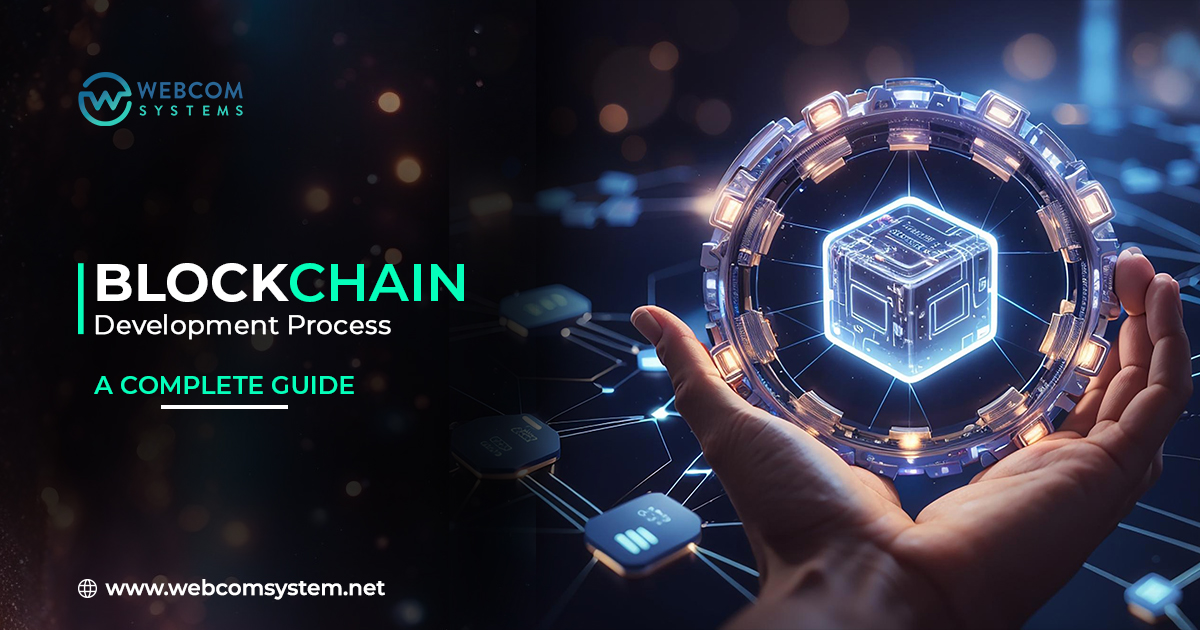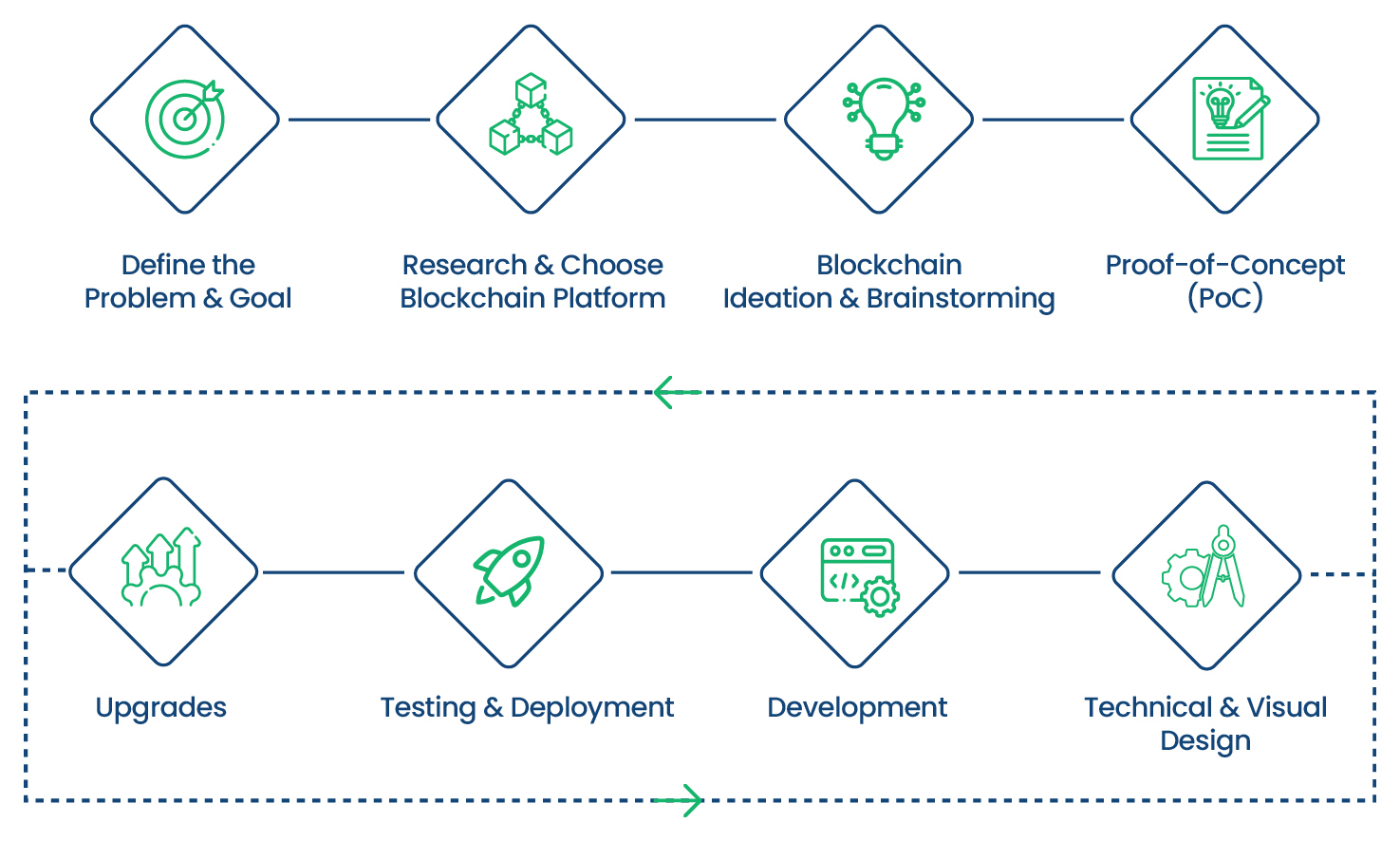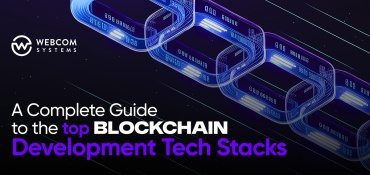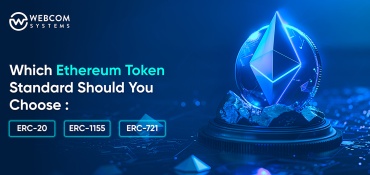Blockchain Technology has the power to alter the way businesses are carried out in different sectors of the economy, displaying the net outcome of performance optimization, transparency, and security. The scope of blockchain technology in the field of finance goes beyond banking systems to the health sector and logistics where it can bring in a big change. Research reports and statistics revealed that Blockchain Technology is gaining adoption in the world today. Companies are in the front rows of blockchain inventions and strive for leadership in the number of patents issued and launched new applications.
The Complete Guide to Blockchain Development Process in 2024
By 2024, the Global blockchain market size is forecasted to be around $20 billion, which experienced rapid features and investment for its growth. For example, the most number of blockchain patents are held by China, whereas IBM comes next with 240 patents approved. In terms of usage, blockchain is adopted into practice by various firms within various sectors. Microsoft Corp, IBM Corp, Deloitte Touche Tohmatsu Ltd., and other big players are increasingly using blockchain technology in applications that include finance, government, healthcare, media & entertainment, commerce, and others. The businesses are resulting in enhanced transparency, security, and efficiency of their operation as they explore new business models empowered by innovative blockchain technology.
As far as entrepreneurs looking forward to building blockchain technology is concerned, it is imperative to realize how the comprehensive Blockchain Development process works. This guide is intended for entrepreneurs, product managers, founders, and innovators seeking to plunge into the in-depth details of how to flexibly apply blockchain to their businesses.
This Blog Talks about the Step-by-Step Process of Developing Blockchain Applications to Get an Understanding & Knowledge of Using Blockchain Technology in your Startups.
What is Blockchain?
Blockchain, a revolutionary technology, has spread its footprints rapidly in business, government, and other industries. It is a secure transactional record that is distributed across a network of computers and which cannot be manipulated by any single participant. Every block in the chain includes the hash code of the previous block with a timestamp of consecutive transaction data and can be manipulated. This feature guarantees security, transparency, and incorruptibility of data making it perfect for use in situations that demand reliability and accountability.
The Blockchain Technology Comes with the Following Benefits:
- Decentralization: to remove the majority of a single point of failure from the system.
- Transparency: by allowing the data to be accessible to each member of the network at the same time.
- Trust: through mass consensus.
- Security: via the permanent ledger of transactions.
Let’s See What is Required to Develop a Blockchain Application that is Both Scalable and Secure.
Create a Blockchain Solution Using Blockchain Development Process.
Define the Problem & Goal
One of the most considerable sections of the blockchain development process is the first step that ensures a firm and long-lasting blockchain project. This step involves the process of determining exactly a particular problem area that Blockchain Technology will bring to a perfect solution or fixing and movement of the goals of each project. It is significant to identify the problem that the blockchain solution is trying to address and make sure that it is in sync with the company’s capacity and objectives.
At this stage, we need to carry out a detailed analysis to determine the weak and strong points of the blockchain system in terms of its applicability to our business. This is going to help the stakeholders in having a clear picture of the problem statement and set very specific goals. This makes it possible to differentiate between the cases when investing in blockchain is beneficial for businesses and when a company needs blockchain implementation to automate its operations.
The next stage is the consideration of the feasibility of the project, which involves determining whether blockchain technology is suitable for resolving the issue. Realizing the value that blockchain adds to businesses, like transparency, security, data sharing, and process efficiency, is the key at this stage. The crucial role of the business requirements is to provide a full picture of the goals, data handling, user requirements, and process improvements that the stakeholders aim to accomplish through the blockchain application. In this way, they ensure that the application will be developed to meet specific needs on a high level.
Is Blockchain the Answer?
Before diving in, we need to check if blockchain is the right tool for the job. We consider things like getting rid of middlemen (decentralization), keeping things clear (transparency), strong security, and not needing to trust anyone (trustless transactions). This helps us decide if blockchain can truly unlock solutions that benefit everyone involved and make a real difference.
Goals, People Involved, and What We Hope to Achieve
Once we have a clear idea, we need to set specific goals to reach success. This means figuring out who’s important in this situation (stakeholders) and what good things we expect to happen (outcomes). This sets us on the right path to create solutions that not only fix problems but also make things run smoother, create trust, and help everyone involved grow.
Example: Tracking Food with Blockchain
Let’s look at supply chains, which is how things move from factories to stores. Blockchain can shake things up in a good way here! Companies like Walmart use blockchain to track their food exactly. This lets them see where the food came from for sure, which helps fight fakes and builds trust with everyone involved.
Blockchain for a Better Future
Finding use cases for blockchain isn’t just about fixing problems; it’s about opening doors to growth and innovation and making a positive impact. So, let’s explore the exciting world of blockchain together and see what amazing things we can create.
Research & Choose Blockchain Platform
One must take into consideration as well as the main idea of the consensual mechanism and the challenges the application wishes to solve when selecting a suitable blockchain platform for building a decentralized app (dApp) without reinventing the wheel. Here are some blockchain platforms to consider based on their functionality and mechanisms:
Ethereum:
Ethereum is based on an open-source blockchain architecture for general-purpose programming. Smart contracts are used in ETH, and the hardware is “Ethash” evidence-of-work, which tends to use more memory rather than the cheap ASIC miners. Ethereum is suited to develop applications with a decentralized public character. In Ethereum, the logic of smart contracts is implemented using Solidity, which is a JavaScript-like scripting language (i.e., a subset of JavaScript also). With Remix IDE, developers can write smart contracts from the browser without the help of any other code editor.
Hyperledger Fabric:
Hyperledger Fabric is an open-source enterprise-ready blockchain platform designed by the open-source community for enterprise applications. It is a permissioned base ledger where the identities of all the participating nodes are known. Hyperledger Fabric offers a module-based architecture, thereby allowing it to be a feature-rich and potentially fault-tolerant platform for blockchain implementations. Smart contracts support “Chaincode” and are writable in a variety of languages. Among them, Golang is the first language that fully supports Chaincode. Hyperledger Fabric is a good choice when there is a need to set up a restricted inner protocol ecosystem for an enterprise without placing it into the public.
Hyperledger Sawtooth:
The Hyperledger Sawtooth, in comparison with Hyperledger Fabric, is a networking platform for developing applications on permissioned blockchain networks. Sawtooth is built on top of Intel, which uses the “Proof of Elapsed Time” consensus mechanism. This refers to participants who wait at specific intervals, and the first one to complete the wait becomes the block leader. Sawtooth supports smart contract developers in popular languages such as Python, Go, JavaScript, and Rust. It is a competent one among the powerful tools for the development of highly scalable multi-purpose projects.
Selecting the best blockchain platform in the development cycle is a very crucial process as it differentiates the future of your project.
Blockchain Ideation & Brainstorming
The next step after selecting the problem and the Blockchain platform for your application is to do brainstorming sessions to come up with ideas and define business requirements. In the blockchain development process, we explore potentials, compile cases, and determine which ones to experiment with first at this stage.
At this stage, we need to differentiate between on-chain and off-chain business entities and decide which components from these two should integrate into the platform. It is also important to design a milestone roadmap for the product development that lists the alpha, beta, and final release build of the application.
The main consequence of the invention stage is to build a concept workflow and a model for the application on the blockchain. During this phase, we decide whether to build the application on a permissioned or permissionless blockchain network. During the idea conceptualization stage, developers need to consider the language for front-end programming, database integration, and server deployment. Such choices fundamentally affect how an application works and determine the quality of the end-user experience.
After generating the idea, the next step involves developing the proof-of-concept to verify the scalability and achievability of the product. This step helps prove the practicality of the idea before scaling up the project.
Proof-of-Concept (PoC)
A Proof-of-concept (PoC) is the key milestone in the demonstration of the actual achievements of a block project if it exists as a theoretical model or prototype. Follow several stages effectively to demonstrate the feasibility of the project when creating a PoC.
Theoretical Build-up
Start the process by identifying the application cases that explain the feasibility and effectiveness of the product. Make proposals that contain their starting and end points to help end-users get a grasp of their performance.
Prototype:
After theoretically building up and gathering stakeholders’ responses, we design a prototype that includes sketches, information architecture, mockups, designs, and a working product. On reception of final approval from stakeholders for the PoC, begin with the preparation of the design of the application.
Stakeholder Feedback and Proof of Concept (PoC)
After completing the theoretical build-up and receiving feedback from every involved stakeholder, you should come up with a prototype containing sketches, information architecture, mockups, designs, and tested products. Once the stakeholders approve the PoC, start focusing on preparing the visual and technical designs for the application.
Upgrades
The application needs to be flexible and allow updates whenever changes or shifts are necessary. For example, if you need to upgrade the smart contract, you must also be able to deploy the new contract. Design and deploy the application so that upgrading or adding components does not disrupt the current application.
Testing & Deployment
In this phase, we’re finally ready to deploy the application. Deployment means transferring an application from a local computer to a prepared application server. Before publishing the app, deploy a test network to check its functionalities before it goes live. When setting up an application, administrators can use provisioning to make sure everyone gets the same version, no matter what device or system they are using.
Following its deployment( installation), on the main chain, the app will be available for use. If you run a transaction on the blockchain, it will build on the public blockchain and automatically publish on the main network.
If your application contains both the transaction processes implementation (off-chain) and on-blockchain procedures (on-chain), you should deploy it to the cloud server and app store/play store.
Development
Building APIs
At this stage, we need to develop APIs for specific application scenarios. Common reasons for needing an API include:
Reasons for APIs
Performing auditing functions
Storing and fetching information from the data.
Creating Keys in Pairs & then Assigning them to Address Pairs.
Checking the data authenticity using hashes and digital signatures as tools of verification.
Manage and deploy smart contracts on the platform to enable the business capabilities of an app.
Application Development Phases
We developed the application in different phases.
Pre-Alpha
The stage of application production before formal checks is pre-alpha.
Alpha
The software now transitions to the next phase, i.e., alpha where developers use the white-box method and could be missing one or more features.
Beta
After the alpha release of an application, it is ready for the beta release. In the Beta Phase, the software is already interactive and fully functional, but it has unstable, unknown bugs. Developers provide a pre-release version to a limited group of individuals outside the organization to test a specific application.
Release Candidate
When the beta version is ready, we build the application for the Release Candidate version. An RC is very close to the final product, and it can be either a replacement for the beta version or a can be a final release.
Production
After testing, if the application proves to be good, we will then move it to the production phase to prepare it for delivery.
Technical and Visual Design
Now that you have already done the planning, it is time to create the user interface for every component of the software developed. Additionally, you have to design APIs that are compatible with user interfaces for running the application at the back end. When making the visual and technical design, also record technical GDPR compliance requirements and ensure their application. Never overlook GDPR, as it’s a crucial pillar of the design process. After you create the user interfaces as well as the admin console you will be ready to proceed with the development of the application.
Adapt to Changing Requirements & Market Trends:
Be agile and adapt constantly to moving market requirements and tendencies in the blockchain sector. Continuously update the application to stay competitive by monitoring industry changes, technological advancements, and user demands.
Through a culture of continuous improvement through feedback analysis, optimization, updates, and effective market adaptation, you can guarantee that your blockchain application grows to satisfy users’ needs and stay relevant in a dynamic environment. Webcom Systems stands out as a reliable partner in blockchain development, offering comprehensive solutions that use the power of blockchain technology to drive innovation and success for their clients.
We emphasize client satisfaction and offer a wide range of solutions across various sectors globally. We specialize in creating tailored technical solutions to address specific needs, with a focus on maximizing the effectiveness of private blockchain networks within organizations.
Also Read: Top Artificial Intelligence Trends in 2024 – The Future of AI






